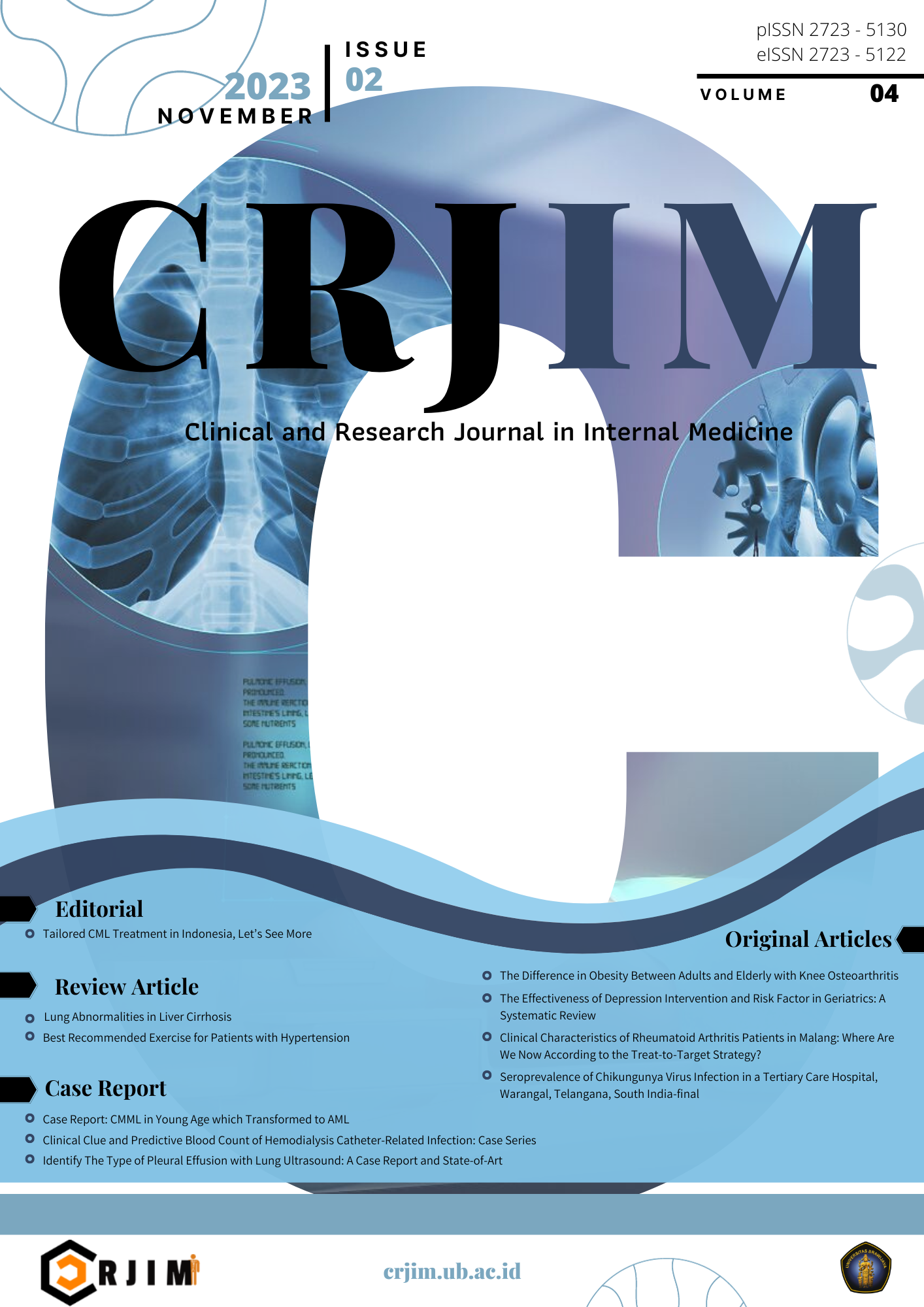Peritonitis as the Cause of Death of CAPD Patients at RSUD Dr. Saiful Anwar Malang 2014-2020
DOI:
https://doi.org/10.21776/ub.crjim.2022.003.01.4Keywords:
CAPD Peritonitis, End-Stage Rena Disease, Continuous Ambulatory Peritoneal DialysisAbstract
Background: Continuous Ambulatory Peritoneal Dialysis (CAPD) is an effective modality of renal replacement therapy in patients with kidney failure. Peritonitis associated with peritoneal dialysis remains a significant challenge and complication to success long-term peritoneal dialysis.
Aim: This study aims to report the peritonitis as a cause of death of CAPD patients for six years in end-stage renal failure (ESRD) patients at RSUD Dr. Saiful Anwar Malang.
Methods: A descriptive study was conducted involving 40 patients with end-stage renal failure who underwent CAPD therapy with peritonitis as the cause of patient mortality by taking data from the CAPD Center medical record at RSUD Dr. Saiful Anwar from August 2014 to July 2020.
Results: From 674 end-stage renal failure patients who underwent CAPD, 248 patients (36.8%) died, and 426 patients (63.2%) survived to 5 years. CAPD peritonitis is the second most common cause of 40 (16.1%) mortality cases after cardiovascular disease. The most common bacteria causing CAPD peritonitis was coagulate-negative Staphylococcus, with as many as 15 (37.5%) cases.
Conclusion: the most common cause of mortality was Staphylococcus coagulase-negative (37.5 %,), a bacteria that come from touch contamination or infection at the exit site. So that patients and caregivers must be trained to carry out proper exit-site, and it is essential to maintain good hand hygiene before performing exit-site. Appropriate prevention and management of peritonitis are critical to patients' long-term success on peritoneal dialysis.
References
Musoke J, Bisiwe F, Natverlal A, et al. The prevalence and bacterial distribution of peritonitis amongst adults undergoing continuous ambulatory peritoneal dialysis at Universitas hospital. South African J Infect Dis. 2020;35(1):104.
Salzer WL. Peritoneal dialysis-related peritonitis: challenges and solutions. Int J Nephrol Renovasc Dis. 2018;11:173–86.
Wang H-H, Huang C-H, Kuo M-C, et al. Microbiology of peritoneal dialysis-related infection and factors of refractory peritoneal dialysis related peritonitis: A ten-year single-center study in Taiwan. J Microbiol Immunol Infect. 2019 Oct;52(5):752–9.
Ito Y, Tawada M, Yuasa H, et al. New Japanese Society of Dialysis Therapy Guidelines for Peritoneal Dialysis. Contrib Nephrol. 2019;198:52–61.
Association IN. 11th report of indonesian renal registry 2018 [Internet]. Available from: https://www.indonesianrenalregistry.org/data/IRR 2018.pdf
Einbinder Y, Cohen-Hagai K, Shitrit P, et al. ISPD guideline-driven retraining, exit site care and decreased peritonitis: a single-center experience in Israel. Int Urol Nephrol. 2019 Apr;51(4):723–7.
Chen H-C, Shieh C-C, Sung J-M. Increasing Staphylococcus Species Resistance in Peritoneal Dialysis-Related Peritonitis over a 10-Year Period in a Single Taiwanese Center. Perit Dial Int J Int Soc Perit Dial. 2018;38(4):266–70.

Downloads
Published
How to Cite
Issue
Section
License

This work is licensed under a Creative Commons Attribution 4.0 International License.
The copyright of the received article shall be assigned to the journal as the publisher of the journal. The intended copyright includes the right to publish the article in various forms (including reprints). The journal maintains the publishing rights to the published articles.

















